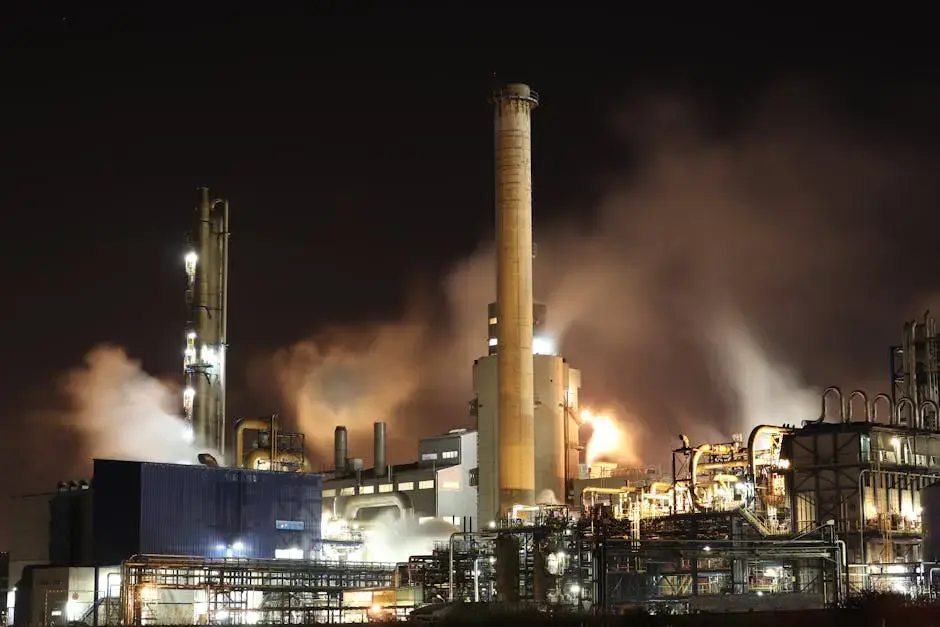Understanding Heat Recovery in Eco-Friendly Greenhouse Operations
- Cogen Grows
- Feb 20
- 4 min read
In recent years, the quest for sustainable farming practices has led many to explore eco-friendly greenhouse operations. One crucial aspect of this innovation is heat recovery, a process that enhances energy efficiency and reduces waste. This blog aims to demystify heat recovery systems and their role in modern greenhouse management, providing insights into how they contribute to a healthier environment and a more productive operation.

What is Heat Recovery and Why is it Important?
Heat recovery involves capturing excess heat generated by greenhouse operations and reusing it to support plant growth. This mechanism not only helps in conserving energy but also contributes significantly to reducing greenhouse gas emissions. By understanding its significance, growers can improve energy efficiency and reduce operational costs, making their practices both economically and environmentally sustainable.
Additionally, heat recovery has implications beyond immediate cost savings. It encourages a shift in the greenhouse industry's approach to energy consumption. Traditionally, heating costs can consume a large portion of a grower’s budget, but by redirecting waste heat, these costs can be mitigated. This section explores the fundamentals of heat recovery and its environmental benefits.
For instance, implementing heat recovery systems can transform headache scenarios, such as rising energy bills and fluctuating energy prices, into opportunities for enhanced resilience and sustainability. Understanding these foundational aspects is crucial for any grower aiming to modernize their operations in alignment with eco-friendly practices.
Types of Heat Recovery Systems Used in Greenhouses
There are various systems for recovering heat in greenhouses; among the most effective are heat exchangers, thermal storage tanks, and ventilation systems. Each of these systems has unique functionalities that cater to specific greenhouse needs, offering growers flexibility in their operations. For instance, heat exchangers facilitate the transfer of heat from one medium to another, enhancing the efficiency of energy use.
Thermal storage tanks, on the other hand, allow for the accumulation of excess heat during peak production times, which can subsequently be utilized during cooler periods. This not only smooths out the energy demand curve but also minimizes the strain on power resources. In this section, we'll discuss each type’s functionality, advantages, and how they can be integrated into existing greenhouse setups.
Ventilation systems also play an essential role in heat recovery. By ingeniously utilizing natural airflows, these systems can help manage excess heat while ensuring optimal growing conditions for plants. Understanding the type of heat recovery system that best suits a particular greenhouse operation is paramount to achieving the desired efficiency and sustainability.
Benefits of Implementing Heat Recovery in Greenhouse Operations
From reducing energy bills to improving crop yields, the benefits of heat recovery are numerous. Most growers find that the initial investment in heat recovery systems pays off in significant savings and operational efficiencies. This comes down to the strife between demand and supply; when energy is conserved through recovery, growers rely less on external sources.
Furthermore, these systems enhance the overall health of the greenhouse ecosystem. By reclaiming heat, growers can maintain optimal temperatures for plant growth more consistently, leading to higher survival rates and productivity. This section will highlight how these systems contribute to cost savings, environmental conservation, and the overall health of the greenhouse ecosystem.
Also worth mentioning is the role of heat recovery in fostering less dependence on fossil fuels. As communities increasingly prioritize sustainability, growers who adopt these systems position themselves as leaders in the agricultural sector, attracting eco-conscious consumers. In today’s market, this not only reflects well on the farm's image but enhances its competitive edge.
Success Stories: Eco-Friendly Greenhouses Utilizing Heat Recovery
Real-world examples can inspire others to adopt heat recovery systems. Take the case of a mid-sized greenhouse operation in Northern California that integrated a heat exchanger as part of its climate control system. By doing so, they successfully reduced their energy consumption by nearly 30%, subsequently improving their profit margins.
In this section, we will profile several successful eco-friendly greenhouses that have effectively implemented these systems, showcasing their challenges and triumphs. One standout story involves a community greenhouse that not only managed its energy consumption but also educated local farmers on sustainable practices, thereby creating a ripple effect of positive change.
These stories serve as powerful testaments to the efficacy of heat recovery systems. They provide tangible evidence that with commitment and the right technology, achieving sustainability in greenhouse operations is not just possible, it’s achievable. By learning from these successes, other growers can feel empowered to embark on their own journeys toward greener practices.
Challenges and Considerations in Heat Recovery Implementation
While heat recovery systems offer many advantages, there are challenges to be mindful of during implementation. For starters, the initial investment can seem daunting to many. It’s essential to provide detailed cost-benefit analyses to reveal the long-term savings and environmental merits that far outweigh the initial expenses.
Moreover, maintenance presents another layer of complexity; without proper upkeep, systems could underperform or malfunction, countering their intended benefits. This section will address common obstacles, such as initial costs, maintenance, and technical skills required, along with suggestions on how to overcome these hurdles.
It's also crucial to consider the technical skills required for effective implementation of heat recovery systems. Growers may need to invest in training or hire skilled workers to operate these systems efficiently. However, the effort put into overcoming these challenges will inevitably lead to enhanced sustainability and efficiency in greenhouse operations.
Embracing Sustainable Practices in Greenhouse Management
As eco-friendly greenhouse operations continue to evolve, understanding and implementing heat recovery systems will play a vital role in shaping a sustainable future for agriculture. By harnessing the natural energy that might otherwise be lost, greenhouse managers can reduce their environmental footprint while optimizing production. Embracing these practices not only supports the planet but also paves the way for a more resilient agricultural industry.



Comments